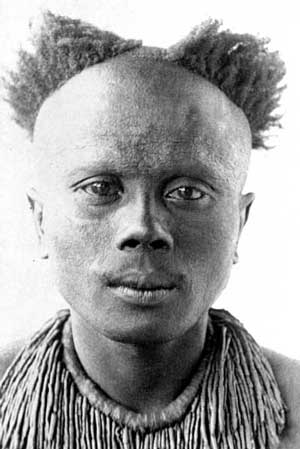
The Pucikwar language, A-Pucikwar, is an extinct language of the Andaman Islands, India, formerly spoken by the Pucikwar people on the south coast of Middle Andaman, the northeast coast of South Andaman, and on Baratang Island. It belonged to the Great Andamanese family.
The Pucikwar were one of the indigenous peoples of the Andaman Islands, one of the ten or so Great Andamanese tribes identified by British colonials in the 1860s. They spoke a distinctive Pucikwar language (A-Pucikwar) closely related to the other Great Andamanese languages. The tribe disappeared as a distinct group sometime after 1931.

The Andamanese are the various indigenous peoples of the Andaman Islands, part of India's Andaman and Nicobar Islands, the union territory in the southeastern part of the Bay of Bengal. The Andamanese are a designated Scheduled Tribe in India's constitution.
The Dakota language, also referred to as Dakhóta, is a Siouan language spoken by the Dakota people of the Očhéthi Šakówiŋ, commonly known in English as the Sioux. Dakota is closely related to and mutually intelligible with the Lakota language. It is definitely endangered, with only around 290 fluent speakers left out of an ethnic population of almost 250,000.

The Great Andamanese are an indigenous people of the Great Andaman archipelago in the Andaman Islands. Historically, the Great Andamanese lived throughout the archipelago, and were divided into ten major tribes. Their distinct but closely related languages comprised the Great Andamanese languages, one of the two identified Andamanese language families.

The Bea language, Aka-Bea, is an extinct Great Andamanese language of the Southern group. It was spoken around the western Andaman Strait and around the northern and western coast of South Andaman.

The Bale language, Akar-Bale, is an extinct Southern Great Andamanese language once spoken in the Andaman Islands in Ritchie's Archipelago, Havelock Island, and Neill Island.
Manam is a Kairiru–Manam language spoken mainly on the volcanic Manam Island, northeast of New Guinea.
The Jarawas are an indigenous people of the Andaman Islands in India. They live in parts of South Andaman and Middle Andaman Islands, and their present numbers are estimated at between 250–400 individuals. They have largely shunned interaction with outsiders, and many particulars of their society, culture and traditions are poorly understood. Since the 1990s, contacts between Jarawa groups and outsiders grew increasingly frequent. By the 2000s, some Jarawas had become regular visitors at settlements, where they trade, interact with tourists, get medical aid, and even send their children to school.

The Great Andamanese languages are a nearly extinct language family once spoken by the Great Andamanese peoples of the northern and central Andaman Islands in the Indian Ocean, and part of the Andamanese sprachbund.

The Kede language, Aka-Kede, is an extinct Great Andamanese language, of the Northern group. It was spoken in the Northern section of Middle Andaman island.

The Kol language, Aka-Kol, is an extinct Great Andamanese language, of the Central group. It was spoken in the southeast section of Middle Andaman.

The Bo language, Aka-Bo, was a Great Andamanese language. It was spoken on the west central coast of North Andaman and on North Reef Island of the Andaman Islands in India. It was recorded as being mutually intelligible with Aka-Jeru, and the vocabularies are very similar.

The Cari, Chariar or Sare language, also known as Aka-Cari, is an extinct Great Andamanese language, of the Northern group, which was spoken by the Cari people, one of a dozen Great Andamanese peoples.

The Jeru language, Aka-Jeru, is a moribund Great Andamanese language, of the Northern group. Jeru was spoken in the interior and south coast of North Andaman and on Sound Island. A koiné of Aka-Jeru and other northern Great Andamanese languages was once spoken on Strait Island; the last semi-fluent speaker of this, Nao Jr., died in 2009. Aka-Jeru is the last surviving member of the Great Andamanese languages. According to a grammar on Aka-Jeru, it and Aka-Cari are dialects of a singular language, with lexical correspondency between the two at 93%.

The Kora (Cora) language, Aka-Kora, is an extinct Great Andamanese language, of the Northern group. It was spoken on the northeast and north central coasts of North Andaman and on Smith Island.
Esan is a tonal Edoid language of Nigeria. Dictionaries and grammar texts of the Esan language are being produced. There are many dialects, including Ogwa, Ẹkpoma (Ekuma), Ebhossa (Ewossa), Ewohimi, Ewu, Ewatto, Ebelle, Igueben, Irrua, Ohordua, Uromi, Uzea, Ubiaja and Ugboha.
This article is a description of the grammar of standardized Has Hlai, a Hlai language spoken on the island of Hainan, China, by the Hlai (Li) ethnic group. The parts of speech are nouns, verbs, adjectives, conjunctions, numerals, adverbs, and pronouns.



